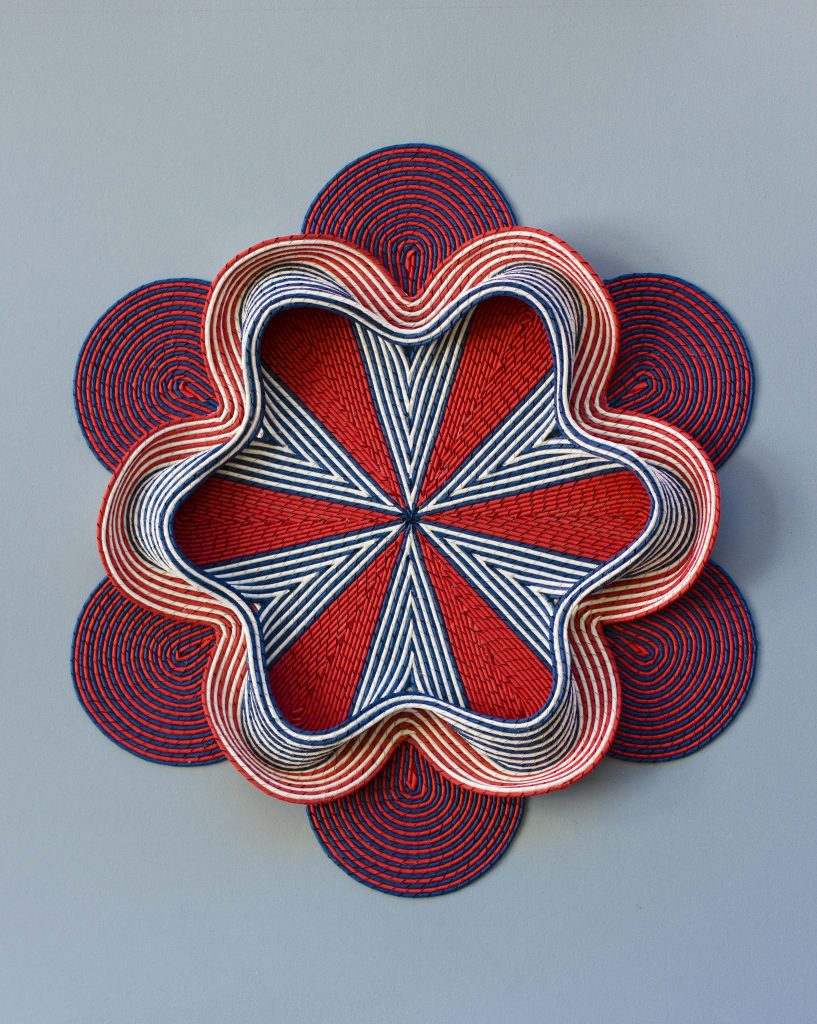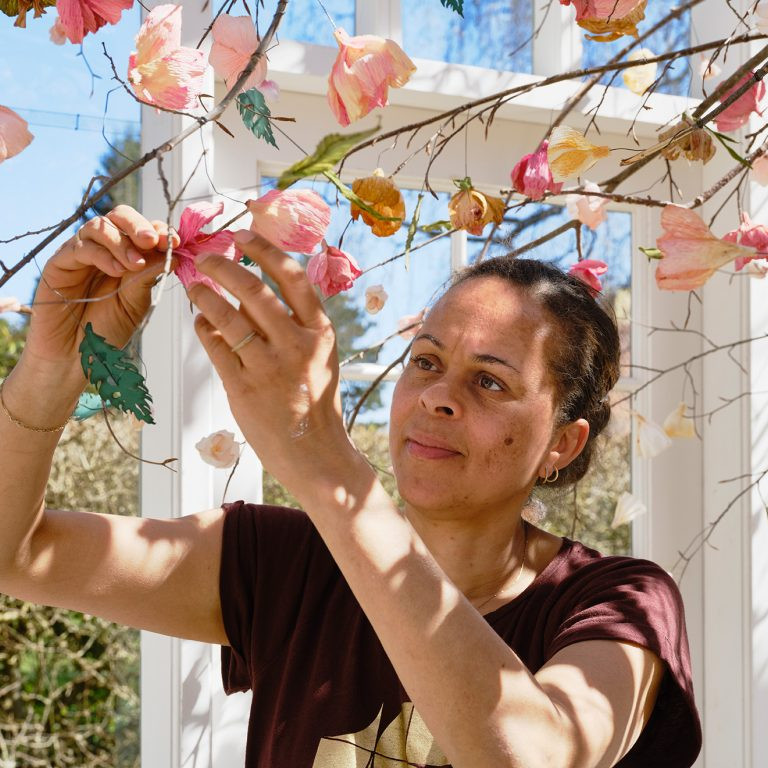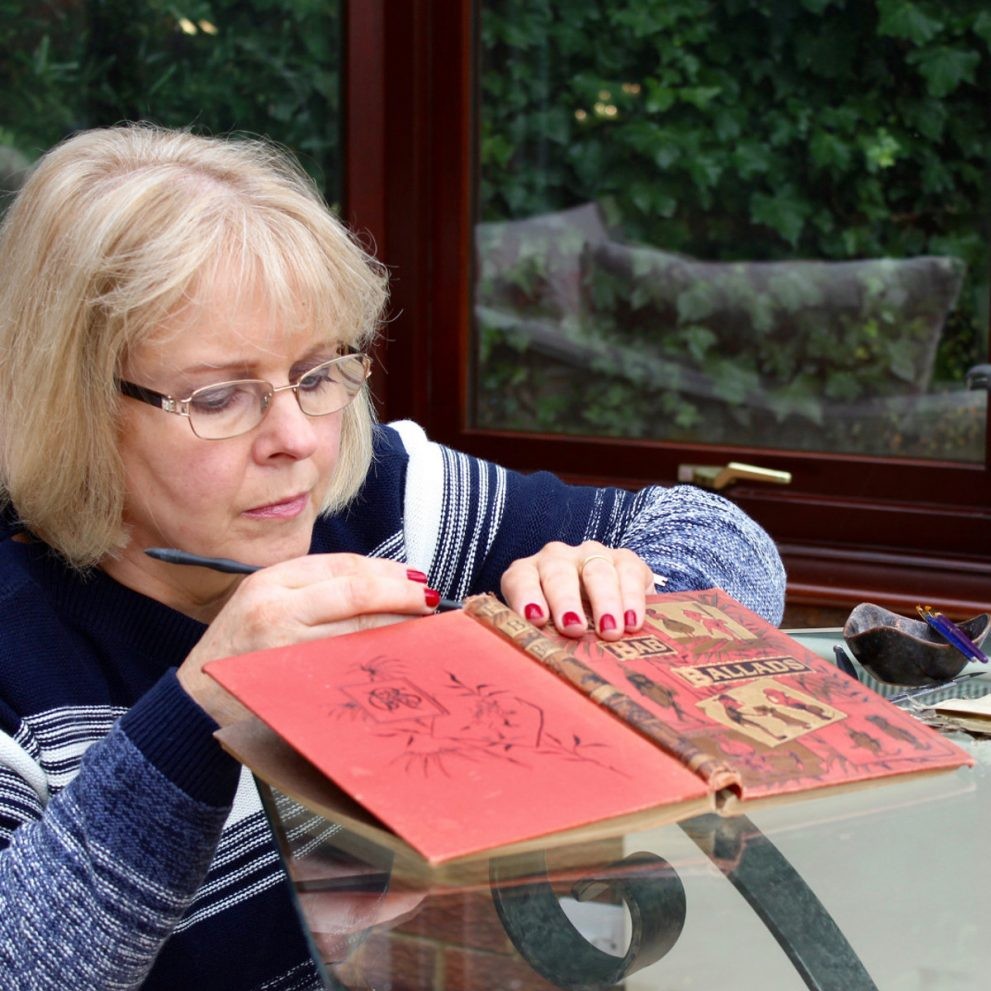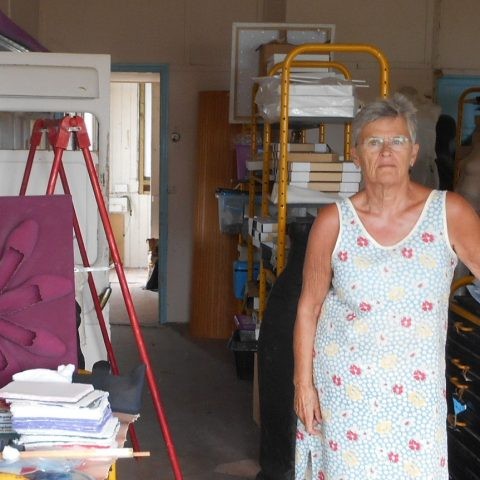Gunjan Aylawadi Paper Artist
Where did you first see paper art?
Do you mean my specific way of working with paper? It’s a technique I came up with while experimenting with paper. Growing up I was always drawn to paper…it was all around me and gave me the freedom to create whenever I wanted. Later in life when I moved to the US & had free time on my hands, I was creating a lot with paper…but was motivated by the desire to do something different, something I hadn’t seen before…and that’s how I began experimenting to come up with a completely new way of working with this beautiful medium.
 Formed in Fantasy
Formed in Fantasy
What led you to become a paper artist?
I was making a lot of work for my own pleasure…and just as my mind began to be switched on about it, I started seeing paper artists everywhere…each one with a unique way of working with paper…that’s when I decided to take my art more seriously and start showing at galleries & group shows.
Discuss briefly the technique you use in your work?
My technique is very simple with no complicated tools required…but the magic lies in repetition of a simple act. I first draw out the geometric plan I will be working with on the base paper. Then I take a sheet of coloured paper and cut it out into equal sized thin strips with a guillotine. I then tightly curl these strips around a piece of wire one by one. As soon as a strip is curled, I immediately take out the wire and the paper strip now looks like a string, which I quickly glue down on the geometric plan. I repeat this curling & gluing till I have my desired geometric form. Each sheet can have hundreds of these strings.
You work as an artist and mathematician discuss the way both are connected.
I am not a mathematician. I only use some geometric concepts to make my work. I am particularly interested in geometry because I love the certainty it offers…and I love clean lines.
Where is your studio?
I have recently had a baby and have a little space set up at home where I work when he sleeps 🙂
How much space to you need?
Not a lot if I am working on smaller pieces. Everything can be packed flat & is easy to store. I designed it to be this way because we were moving a lot & I wanted to be able to do work without space as a constraint.
What is one tool you could not be without?
A guillotine.
Discuss the 3D effect found in your work? Explain how you achieve this 3D work?
The 3D effect is inspired by 3D printing – where the basic principle is that a string of plastic is melted on top the previous layer to add height. I do the same with paper strings – I just glue one string on top of the other. Its very delicate work and took me a while to get it to be neat and seamless.

In Bloom
You call your work, paper tapestry, expand on how you come to this title?
That came about as away to explain this completely new technique for my work as I din’t have a name for it. I would show pictures of my work to people and they would say it looks like tapestry/carpets. It just became a helpful way of guiding people what to expect when thinking about my work.

Marigold
Expand on your use of pattern and repeat patterns in you work.
I grew up in New Delhi which is a melting pot of religions in India. My family is Hindu so we visited a lot of temples; I went to a catholic school & there was a church next door to us and there were mosques all around the area.
I loved how different religions used geometric patterns to decorate their places of worship. They were divided by beliefs but connected at a more deeper level.
I’ve had a love for patterns since that young age. Watching endless patterns on the ceilings became the only reason to go to a temple for me. I could get lost in them and that was how I meditated and prayed.
I feel the same way about my work…the slow & repetitive nature puts me in a meditative state. It is like being back in the same place of prayer for me.
Explain your work, ‘Love It’?
It was made in response to what I was experiencing both as a reaction to my work & my reaction to things I was seeing. Being on social media platforms like Instagram, I was being exposed to a lot of images in a very short time. It had become a mindless habit to scroll through my feed and like something after seeing it for a few seconds and declare that I love it.
At the same time, a lot people would see my work for a few seconds and declare that they love it.
I just wanted to do something slow with such a throwaway term and create an opportunity to look at it differently
Discuss Hakk// CODA.

Hakk// CODA #5
The number of patterns – 9 different patterns
The number of repeats – 12 times each
The size of the work – 2.25 mtrs * 3 mtrs
‘Hakk’ is to weave in Arabic. I drew on imagery I grew up with in India to make this work. I’ve spent the better part of my life in New Delhi – a city that’s home to people with different religious beliefs and diverse economic backgrounds. In spite all the differences, arabesque patterns repeat themselves over and over again in the temples, mosques, old architecture and contemporary design alike. This work proposes a place where faith, culture and individual identities meet. Correlating to our various identities and attempts to appear not as we are, the medium of paper appears to be fabric when it is not. On another level, all these identities in India, co-exist much as threads in a tapestry, where some differences are so striking and other boundaries so blurred that it is difficult to pin point where one faith and culture begins and another ends.
How have you been able to combine your past and heritage with your current art and your new country?
I’ve gone from making simple geometric patterns for the sake of experiencing the meditative state and sitting quietly with myself to finding a voice and the skills to say it through my work.
Some of my earlier works looked like this:

Rabie
They were arabesque patterns that I was interested in. But I had no clue where I was going with these. I then started to do works with texts hidden in them to get viewers to look closely.
As I began to get more comfortable with my own voice, my technique evolved into a third dimension and works became less literal and more evocative. My current works look like this:
Where does the Engineer leave, and the artist take over?
The engineer in me helps me with creating constraints & making plans & the discipline around making work…but that’s the extent of it. The artist in me is the one who has a voice and things to say and I am continuing to nurture that part of me.
Contact details:
Gunjan Aylawadi
gunjan.aylawadi@gmail.com
Gunjan Aylawadi, Sydney, Australia
Interview by Deborah Blakeley, January 2019
Think a colleague or friend could benefit from this interview?
Knowledge is one of the biggest assets in any business. So why not forward this on to your friends and colleagues so they too can start taking advantage of the insightful information the artist has given?
Other artists you may be interested in:






